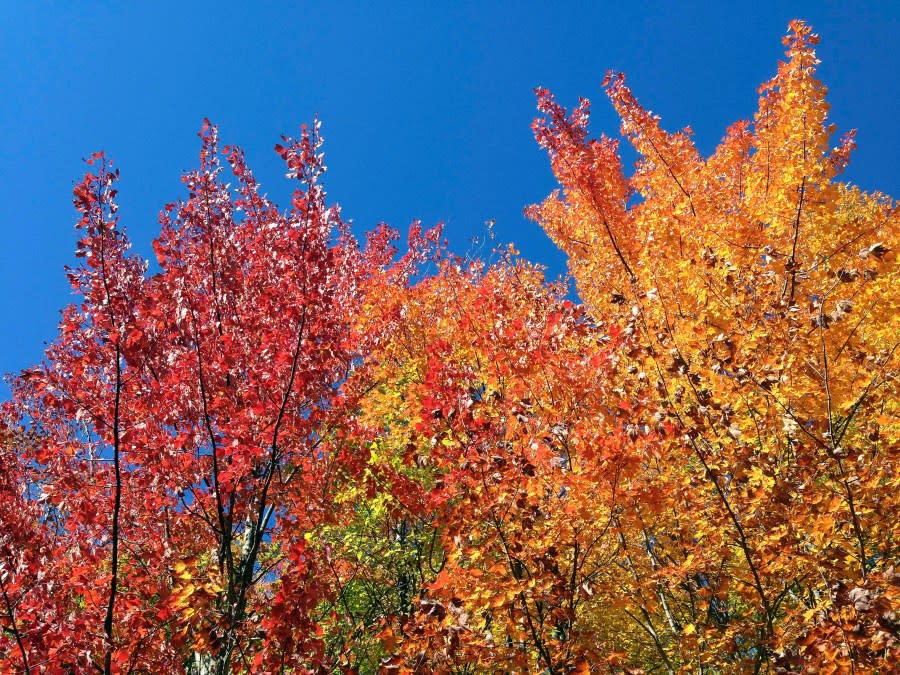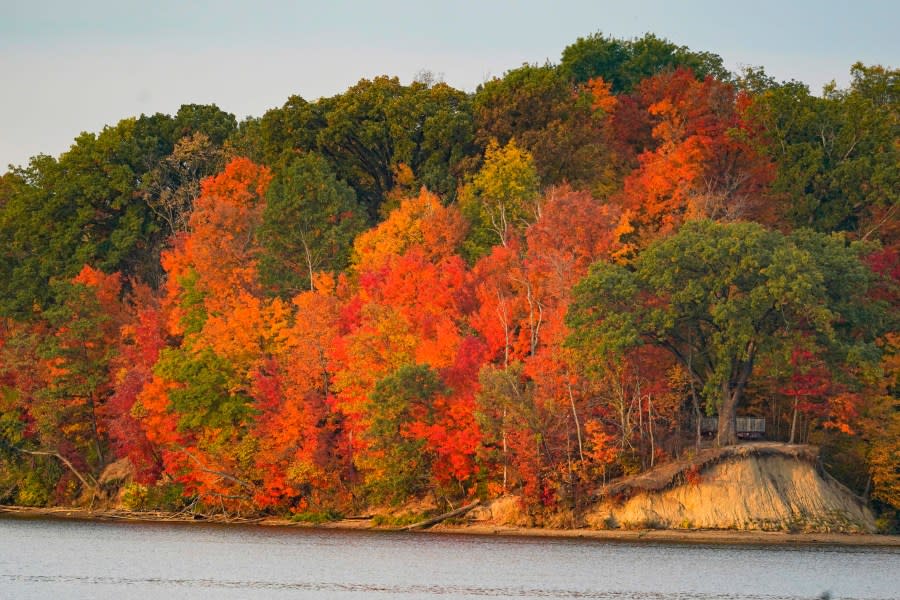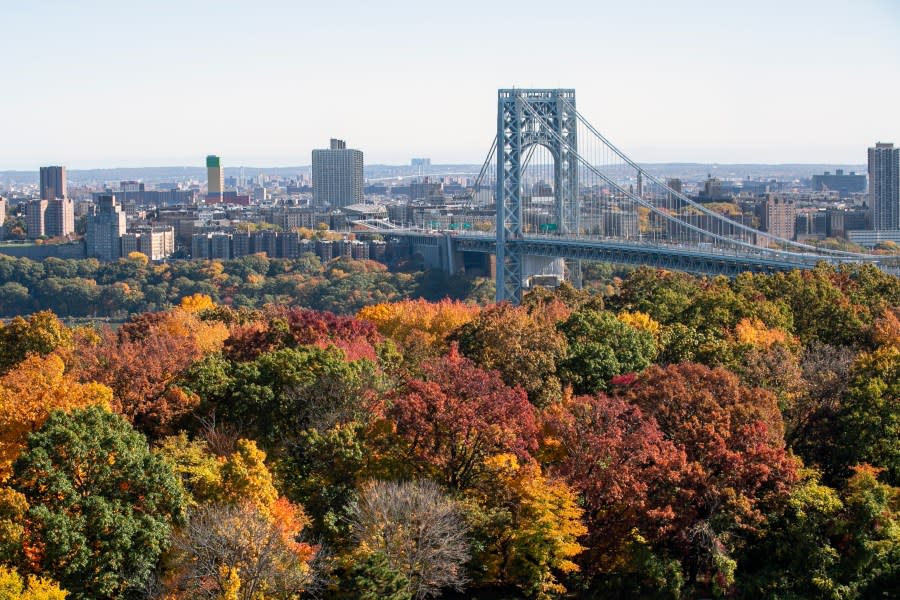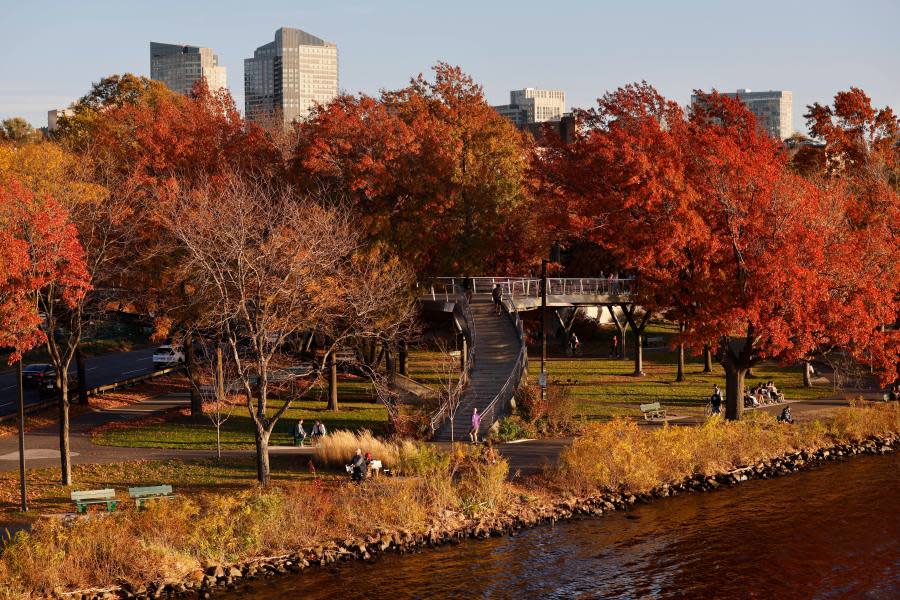When will the fall colors peak in Nevada?

(NEXSTAR) — Sure, many of us are still soaking in the summer sun — and heat — but fall is right around the corner. Depending on where you live, the leaves may have already started fading to their fall shades of reds, oranges, yellows and browns.
How fast the leaves change, and when colors peak, largely depends on where you live.
Regardless of where you live, though, the leaves around you are on a schedule.
Why do leaves change color?
What ignites the trees to erupt into reds, oranges and yellows is largely the length of day, Brad Hutnik, a forest ecologist/silviculturist with the Wisconsin Department of Natural Resources told Nexstar.
We’ve been slowly losing daylight since the summer solstice in mid-June, and it will only become more noticeable as we move through September. Our trees are tuned into that lack of light and will begin to wind down for the year.
“Oftentimes, by the time we’re seeing the leaves on the trees, that tree is functionally shut down for the year, and those leaves are essentially just dying off,” Hutnik says. By late September, many trees will have fully shut down.
In this Sunday, Oct. 11, 2015 photo, autumn foliage blazes on trees on Warren Mountain Road in Roxbury, Vt. For most of New England, the fall foliage is a little less glorious this autumn. Experts said a hotter than usual September and a dearth of rainfall are two reasons for the late and largely muted color display. (AP Photo/Dave Gram) Fall foliage is reflected on the surface of Lilly Lake in Eagle Creek Park in Indianapolis, Tuesday, Oct. 11, 2022. (AP Photo/Michael Conroy) Fall foliage lines the bank of the reservoir in Eagle Creek Park in Indianapolis, Tuesday, Oct. 11, 2022. (AP Photo/Michael Conroy) Fall foliage is on trees in Fort Lee, New Jersey, near the George Washington Bridge on Saturday, October 29, 2022. (AP Photo/Ted Shaffrey) The Esplanade, the Charles River and the skyline are seen, Friday, Nov 4, 2022, in Boston. (AP Photo/Michael Dwyer)
“Every year, we see leaf change at about the same time,” he explains. “Some years it feels a little early, some years it feels a little later, but that’s really where other factors come into play that will maybe speed things up or slow things down.”
That includes drought conditions, which many states, including Wisconsin, have struggled with this summer. Drought-stressed trees could change colors and lose their leaves sooner, Hutnik says. But a bit of rain could help slow that process, which can lead to variations in the colors in different regions.
When it’s dry, for example, a red maple may turn color early and be vibrant. The same may happen during a very wet year as well, Hutnik notes.
Red maples are among the earliest to change color, as well as Norway maples (these are common in cities), sugar maples and walnut trees.
When will the leaves peak near me?
It will likely be a few weeks until the majority of leaves around you change colors.
In some states, like New York, Montana and Vermont, colors may reach their peak in late September, according to the Farmers Almanac. For such states as Utah, Pennsylvania and Colorado, the best time may be the first two weeks of October. Further south, such as in Nevada and Mississippi, expect peak colors in late October and early November.
According to a fall foliage prediction map by SmokyMountains.com, some very northern areas of the country will see minimal color changes going into early September. That includes the northern reaches of Idaho, Montana, North Dakota, Minnesota, Michigan’s Upper Peninsula, New York, Vermont, New Hampshire and Maine, as well as Utah’s Salt Lake County and Colorado’s northern mountainous counties.
Map: These counties are home to the most excessive drinkers, study finds
By the first week of October, many counties throughout the northern U.S., New England and across the Rockies will be at or near peak, the map predicts. Leaves throughout the South won’t near peak until late October and early November.
Some states are already tracking fall colors. Travel Wisconsin shows northern portions of the state could peak during the first week of October.
Spotting the non-natives
It seems as though, without fail, you will come across a tree that appears to be holding onto its leaves for dear life, well after its fellow deciduous pals have shed theirs. In that case, it’s safe to say that tree isn’t from the area.
As Hutnik explained, the tree was likely brought from another area that has a longer growing season.
“It’s not really responding to that length of day,” he said. “It’s a little bit out of sync.”
Map: Does your drinking water contain ‘forever chemicals’?
Similarly, fall can serve as a good time to spot an invasive species, particularly invasive shrubs.
These invasive plants won’t catch onto the local cues native plants are tuned into, Hutnik said. This means they will hold onto their leaves late into the year and may get their leaves earlier in the spring.
Those living in Wisconsin, for example, may notice a green-leaved shrub well into November. Most likely, that is buckthorn or honeysuckle, both invasive species in the state. You can find more details about invasive species in your state through your Department of Natural Resources.
For the latest news, weather, sports, and streaming video, head to KLAS.






